Cardamom tastes like a complex blend of sweet, spicy, citrusy, and floral notes with warm undertones of mint and eucalyptus. This distinctive cardamom spice taste combines the brightness of lemon-lime, the warmth of cloves, and a subtle cooling sensation that makes it unlike any other spice. In just one bite, you'll experience its multi-dimensional flavor profile that's simultaneously sweet without sugar, warmly spiced but not hot, and refreshingly citrus-forward.
Table of Contents
- The Complete Cardamom Flavor Profile (What Cardamom Tastes Like)
- Green vs Black Cardamom: Taste Differences Explained
- Why Cardamom Tastes This Way: The Science Behind Its Flavor
- How Cooking Changes Cardamom's Taste Profile
- How to Identify Fresh Cardamom by Taste and Smell
- Best Flavor Pairings for Cardamom's Unique Taste
- How Much Cardamom to Use Without Overpowering Dishes
- Storage Methods to Preserve Cardamom's Authentic Taste
- Frequently Asked Questions About Cardamom Taste
The Complete Cardamom Flavor Profile (What Cardamom Tastes Like)
When you taste cardamom, you're experiencing one of the most complex spice profiles available. The cardamom spice taste reveals itself in layers:
| Flavor Dimension | Specific Taste Characteristics | How to Recognize It |
|---|---|---|
| Primary Notes | Sweet citrus (lemon-lime), floral, herbal | Immediate bright, refreshing sensation similar to citrus zest |
| Secondary Notes | Warm spice (clove-like), minty/eucalyptus | Mildly warming sensation followed by subtle cooling effect |
| Base Notes | Earthy, slightly resinous | Deep, grounding flavor that lingers after the brighter notes fade |
| Texture Impact | Slightly oily, releases flavor gradually | Seeds create pleasant mouthfeel; flavor develops over 10-15 seconds |
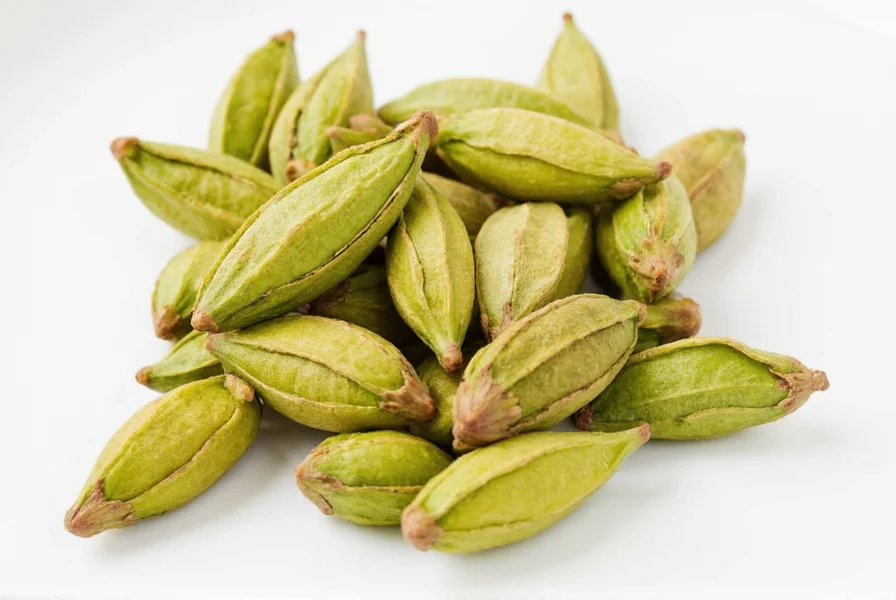
Green vs Black Cardamom: Taste Differences Explained
Understanding the difference between green and black cardamom taste is crucial for proper culinary application:
| Characteristic | Green Cardamom Taste | Black Cardamom Taste |
|---|---|---|
| Primary Flavor | Bright citrus, floral, sweet | Smoky, camphorous, medicinal |
| Intensity | Moderate; builds gradually | Strong; immediate and powerful |
| Citrus Note | Pronounced lemon-lime freshness | Minimal to none |
| Aftertaste | Clean, slightly sweet lingering note | Smoky, sometimes bitter finish |
| Best Used In | Desserts, beverages, light sauces | Robust savory dishes, braises, stews |
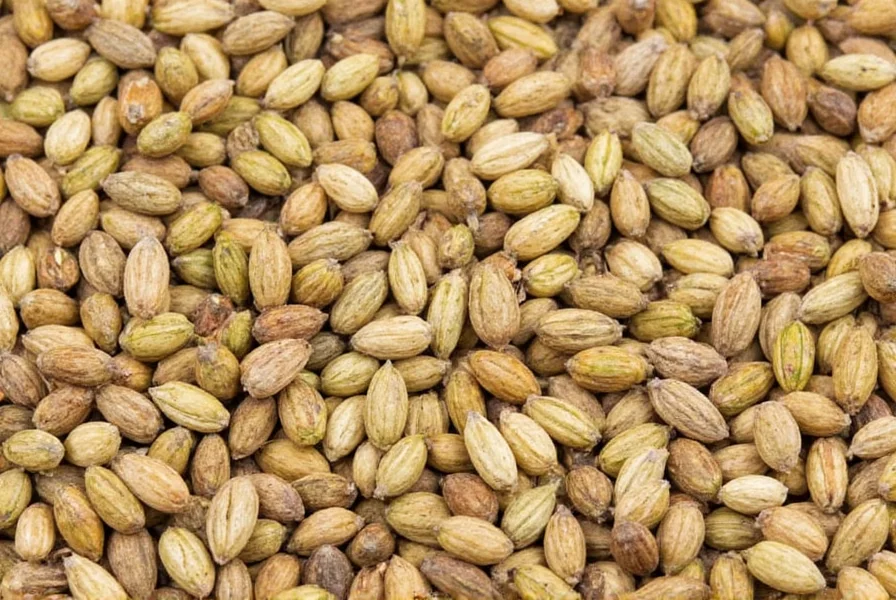
Why Cardamom Tastes This Way: The Science Behind Its Flavor
The distinctive cardamom spice taste comes from specific chemical compounds that create its multi-dimensional flavor profile:
- Limonene - Provides the dominant citrus note (also found in lemon and orange peels)
- 1,8-cineole - Creates the minty/eucalyptus cooling sensation (same compound in eucalyptus and rosemary)
- α-terpinyl acetate - Contributes floral and herbal notes
- Camphor - More prominent in black cardamom, giving its smoky, medicinal quality
These compounds work together to create cardamom's signature taste that no single spice can replicate. When you taste cardamom, these volatile oils interact with your taste receptors in a specific sequence - citrus first, then spice, followed by the cooling sensation, and finally the earthy base notes.
How Cooking Changes Cardamom's Taste Profile
The cardamom spice taste transforms significantly when exposed to heat:
- Raw cardamom: Maximum citrus notes, brighter flavor, more pronounced cooling sensation
- Dry roasted: Citrus notes mellow, warm spice elements intensify, develops nutty undertones
- Simmered in liquids: All notes blend harmoniously, citrus becomes more subtle, warming spices dominate
- Baked in desserts: Sweetness enhances, cooling sensation diminishes, creates complex background flavor
For the most authentic cardamom taste in cooked dishes, add whole pods early in the cooking process for deep flavor integration, or ground cardamom near the end for more pronounced citrus notes.
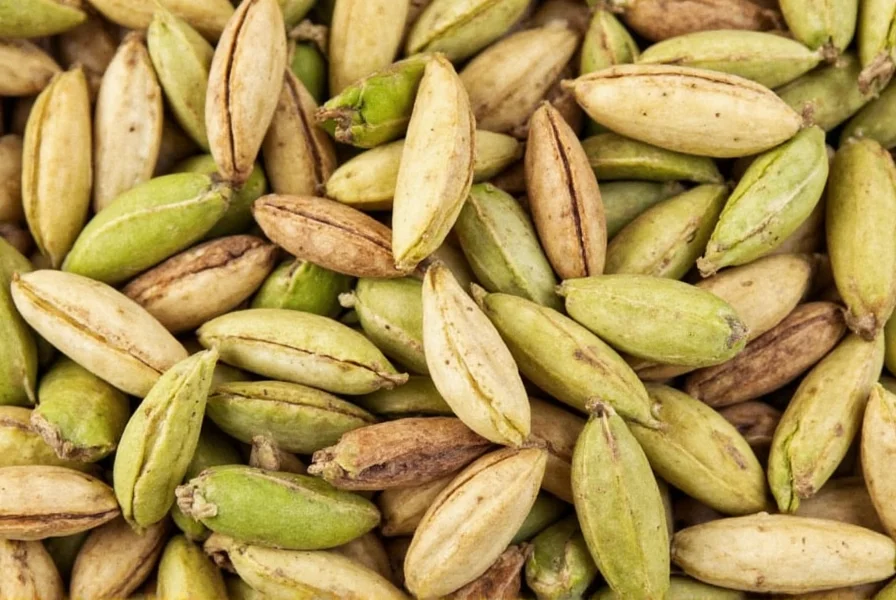
How to Identify Fresh Cardamom by Taste and Smell
Fresh cardamom delivers a vibrant cardamom spice taste, while stale cardamom loses its complexity:
- Fresh cardamom: Strong citrus aroma when pods are cracked, seeds are dark brown to black, delivers full flavor spectrum in taste test
- Stale cardamom: Weak or musty smell, seeds appear lighter in color, tastes one-dimensional (usually just spicy with no citrus notes)
To properly test cardamom's taste quality, crush one seed between your fingers, inhale deeply, then place it on your tongue. Fresh cardamom should produce an immediate citrus burst followed by the complete flavor progression. If you only taste generic spice with no citrus notes, the cardamom has lost its essential oils and flavor complexity.
Best Flavor Pairings for Cardamom's Unique Taste
Understanding what complements cardamom's taste profile helps maximize its culinary potential:
- Sweet applications: Pairs perfectly with orange, lemon, vanilla, chocolate, and rose water - the citrus in cardamom enhances other citrus flavors
- Savory applications: Complements lamb, chicken, rice, lentils, and root vegetables - its citrus notes cut through rich fats while enhancing natural flavors
- Beverages: Creates balance in strong coffee and black tea - the spice notes complement bitterness while citrus notes provide brightness
- Spice combinations: Works harmoniously with cinnamon, cloves, and nutmeg - but use these sparingly as they can overpower cardamom's delicate notes
The key to successful pairing is recognizing that cardamom's citrus element makes it function differently than other warm spices - treat it more like citrus zest than a typical baking spice.
How Much Cardamom to Use Without Overpowering Dishes
Cardamom's potent cardamom spice taste requires careful measurement:
- For 4-6 servings: 3-6 whole pods (or 1/4 to 1/2 teaspoon ground cardamom)
- In baking: 1/8 to 1/4 teaspoon per cup of flour for subtle flavor, up to 1/2 teaspoon for pronounced cardamom taste
- In beverages: 1-2 crushed pods per 8oz liquid for noticeable but balanced flavor
Always remember that cardamom's flavor intensifies during cooking. A good rule of thumb: if you can immediately identify cardamom as the dominant flavor in a dish, you've likely used too much. Start with less than you think you need, then adjust at the end of cooking.
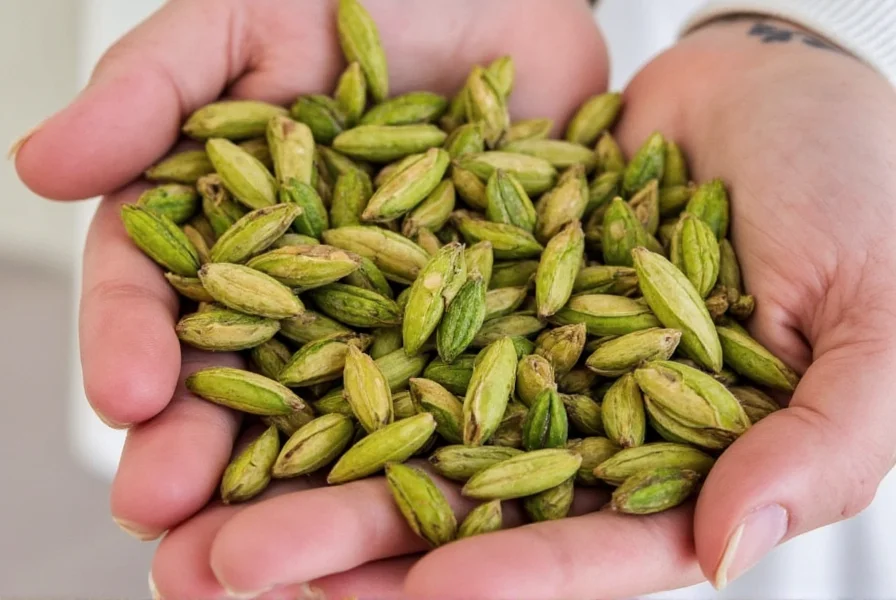
Storage Methods to Preserve Cardamom's Authentic Taste
To maintain cardamom's complex flavor profile:
- Store whole pods in an airtight container away from heat and light
- Freeze whole pods for up to one year (thaw before use)
- Grind only when needed - pre-ground cardamom loses 50% of its flavor compounds within 3 months
- Never store near strong-smelling foods as cardamom readily absorbs other odors
Properly stored whole cardamom pods retain their full cardamom spice taste for 12-18 months, while ground cardamom begins losing its distinctive citrus notes within weeks of grinding.
Frequently Asked Questions About Cardamom Taste
What does cardamom taste like exactly?
Cardamom has a complex flavor profile that's simultaneously sweet, spicy, and citrusy with floral and herbal notes. Many describe it as a blend of lemon, mint, and eucalyptus with warm spicy undertones similar to cloves. The precise cardamom spice taste is difficult to replicate with other spices due to this unique combination.
How would you describe the cardamom spice taste profile in detail?
The flavor profile of cardamom can be broken down into several components: it has a natural sweetness without actual sugar content, a warming spiciness that's not hot, a bright citrus note (particularly lemon-lime), subtle floral elements, and a mild earthy base. When chewed, you might notice a slight cooling sensation similar to mint, followed by a long, pleasant aftertaste.
How does green cardamom taste different from black cardamom?
Green cardamom has a more floral, sweet, and citrus-forward flavor profile, making it versatile for both sweet and savory dishes. Black cardamom, by contrast, has a distinctly smoky, camphorous flavor due to the traditional drying process over open flames. It's more intense and earthy, generally used only in savory applications like Indian curries and Chinese braises.
Does the taste of cardamom change when cooked?
Absolutely. When raw, cardamom has a brighter, more citrus-forward flavor. Cooking mellows its intensity and allows the warmer, spicier notes to emerge. Dry roasting before use enhances its depth, while prolonged simmering in liquids creates a more integrated, subtle flavor. For the most pronounced cardamom taste, add it toward the end of cooking.
How can I tell if my cardamom has gone bad or lost its flavor?
Fresh cardamom should have a strong, complex aroma when the pod is cracked open. If it smells dull, musty, or barely noticeable, the flavor has likely diminished. Visually, the seeds inside should be dark brown to black; if they're lighter in color, the spice has aged. Properly stored whole pods maintain their cardamom spice taste for up to a year, while ground cardamom loses potency within 6 months.
What flavors pair best with cardamom's unique taste?
Cardamom harmonizes beautifully with citrus (especially orange), vanilla, chocolate, cinnamon, cloves, and nutmeg. In savory applications, it complements lamb, chicken, rice, lentils, and root vegetables. The citrus notes in cardamom make it particularly effective at cutting through rich, fatty foods while enhancing their natural flavors.
Why does cardamom have that distinctive citrusy note?
The citrusy characteristic in cardamom comes from natural compounds like limonene and cineole present in the essential oils of the spice. These compounds are also found in citrus fruits and eucalyptus, explaining the familiar yet unique flavor profile that makes cardamom spice taste so distinctive among culinary spices.
How much cardamom should I use to get the right flavor without overpowering a dish?
Cardamom is potent—use it sparingly. For most recipes serving 4-6 people, 3-6 whole pods (or 1/4 to 1/2 teaspoon ground cardamom) is sufficient. Remember that the flavor intensifies during cooking, so it's better to start with less and adjust at the end. A good rule of thumb: if you can immediately identify cardamom as the dominant flavor, you've likely used too much.
Can I substitute cardamom with another spice if I don't have it?
While no single spice replicates cardamom's complex profile, you can create a reasonable approximation with a blend of equal parts cinnamon, nutmeg, and a pinch of cloves. For recipes calling for green cardamom, add a drop of lemon zest or orange extract. For black cardamom's smoky quality, use a tiny pinch of smoked paprika with the other spices.
Does grinding cardamom change its taste compared to using whole pods?
Yes, significantly. Whole pods preserve the essential oils and complex flavor compounds much longer. When you grind cardamom, you immediately release these volatile compounds, creating a more intense but shorter-lived flavor. Ground cardamom has a flatter, one-dimensional taste compared to the nuanced, layered flavor of freshly ground seeds from whole pods.
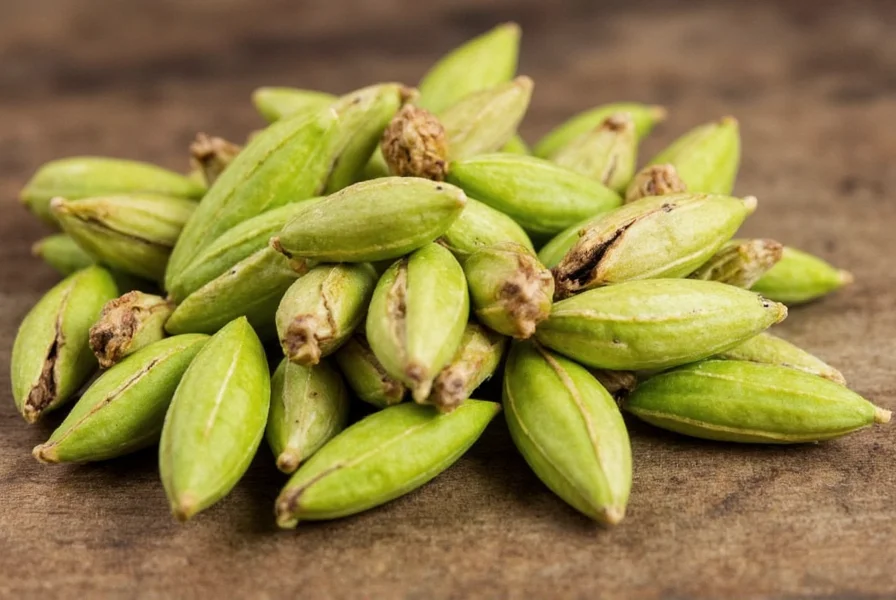










 浙公网安备
33010002000092号
浙公网安备
33010002000092号 浙B2-20120091-4
浙B2-20120091-4